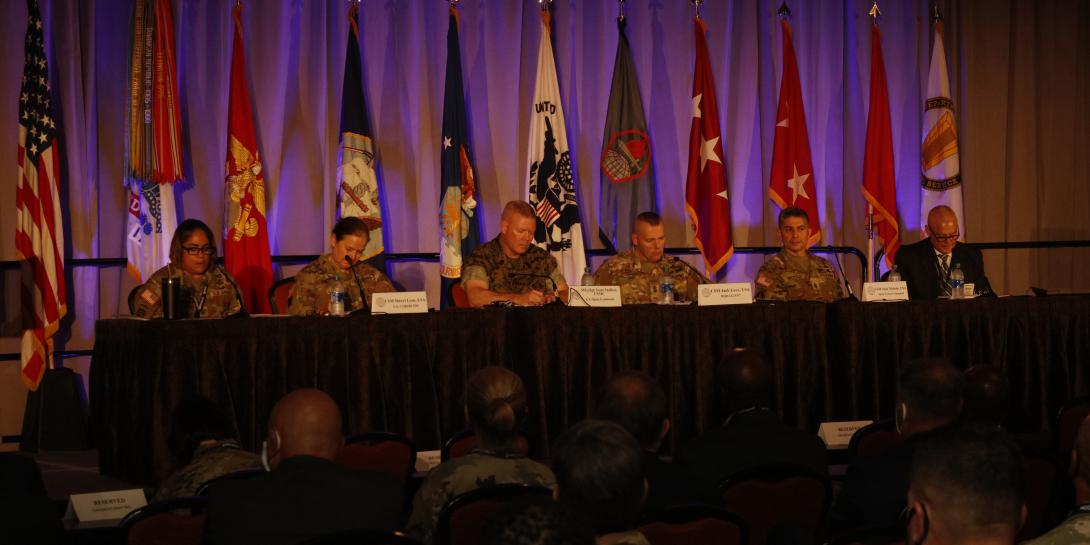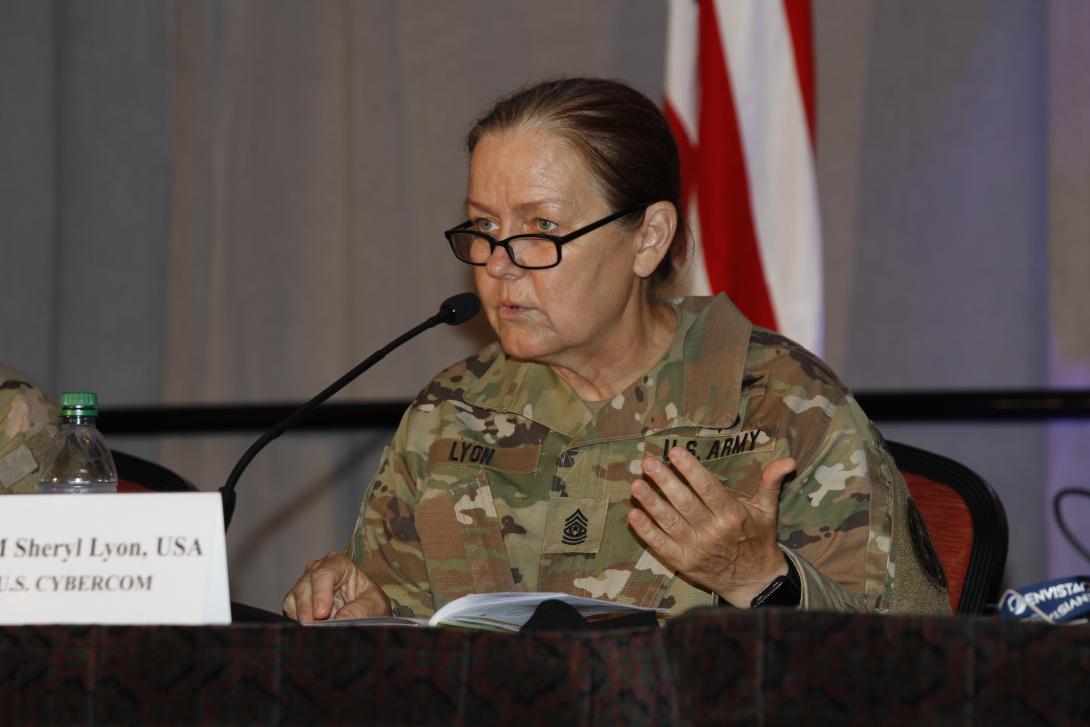Whole-of-Society National Security
It may take a village to raise a child, as the saying goes, but it can take a whole society to keep a country secure.
The term “whole-of-government” has been popular since at least the early 2000s to describe a multidepartment, multiagency effort to gain an advantage or keep the nation secure. The term has been used, for example, to describe counterterrorism efforts.
MGySgt Scott Stalker, USMC, command senior enlisted leader, U.S. Space Command: It's not just multi-domain operations. It's all domains.#AFCEATechNet
— George Seffers (pronounced See furs) (@gseffers) August 17, 2021
But in the era of cyber, space and information activity, even a whole-of-government approach is not enough. “We no longer at Space Command really refer to it as a whole-of-government approach to anything. We really refer to it as whole of society,” MGySgt. Scott Stalker, USMC, command senior enlisted leader, U.S. Space Command, told the audience at AFCEA’s August 16-19 TechNet Augusta conference. “Whole of society is inclusive of academia. It’s inclusive of industry. It’s inclusive of partners and allies.”
MGySgt Scott Stalker, USMC, command senior enlisted leader, U.S. Space Command: We at space command no longer refer to it as a whole-of-government approach for anything. We refer to a whole-of-society effort.#AFCEATechNet
— George Seffers (pronounced See furs) (@gseffers) August 17, 2021
Those international partners and allies go beyond the so-called “Five Eye” nations of Australia, Canada, New Zealand, the United Kingdom and the United States, which are known for their close collaboration and intelligence sharing. “We rely heavily on our partners and allies—not just the Five Eyes that I was used to as an intelligence professional—but France, Germany, Japan, some of the nontraditional nations we may not be used to dealing with,” MGySgt. Stalker explained. “We bring them onboard. We have agreements with them. They work on our operations floor.”
He cited SpaceX as an example of an industry partner in the space domain. Think of what we were doing a few years ago, writing millions of dollars in checks to the Russians in order to put capabilities and people into space. Today, we can use as an example, SpaceX, who can not only get us there cheaper and faster but return the rocket to reutilize that. The technology, the advancements of industry is a strategic advantage for the United States.”
He also noted a recently released memo from the secretary of defense, which emphasized the need to behave responsibly in space. “In some ways, some would characterize it as the wild west. I, myself, would not. The document highlights the fact that we cannot just act willy-nilly up there,” MGySgt. Stalker asserted. “Today alone we’re tracking over 32,000 pieces of debris in space. We’ve got to utilize our partners and allies, industry, academia, everyone onboard so that the wild west is not what the space domain is going to be.”
CSM Sheryl Lyon, USA, senior enlisted leader, U.S. Cyber Command, who served on the same senior leader panel at the conference echoed the sentiment. “We talk about the joint domain. In this respect, I don’t think it is just a joint domain. It is the industry. It is the civilian sector. It’s academia. It’s any of our foreign partners and allies, getting back to that whole-of-nation, whole-of-society, and about being able to drive it into the future and ensuring we have those solidified partnerships that will succeed,” she said.
Like space-based capabilities such as GPS and satellite communications, the cyber arena has wide-ranging effects. “Cyber affects everyone. When you look across the domains of the warfighting functions, you cannot do any of them now without any of the others, so having that unified platform, that unity of effort, is going to be critical to the success of operations in the future,” CSM Lyon added. “In simple terms, cyber never sleeps.”
CSM Sheryl Lyon, USA, sr. enlisted leader, U.S. Cyber Command: In simple terms, cyber never sleeps.#AFCEATechNet
— George Seffers (pronounced See furs) (@gseffers) August 17, 2021
She cited the Interactive Cyber Collaboration Center, which was established to so that the military could more easily share cyber-related information with others. It is used to mostly share unclassified information, but can move into classified territory when necessary.
CSM Lyon also listed FireEye, the company that first detected and reported the SolarWinds breach. “Without them, it could have taken us longer as a whole to note that had happened,” she said.







Comments